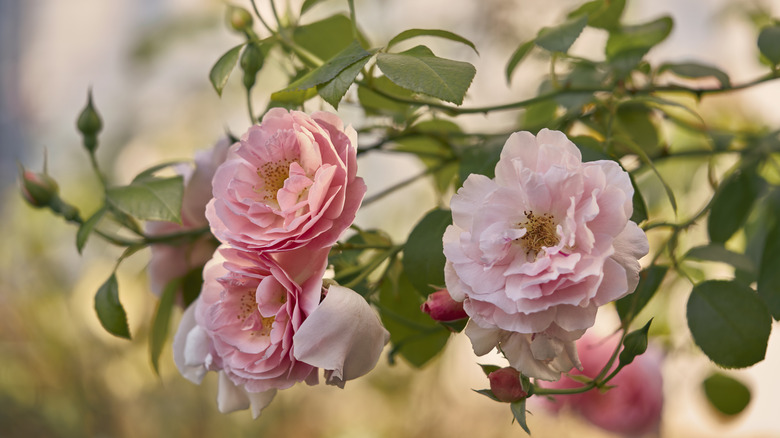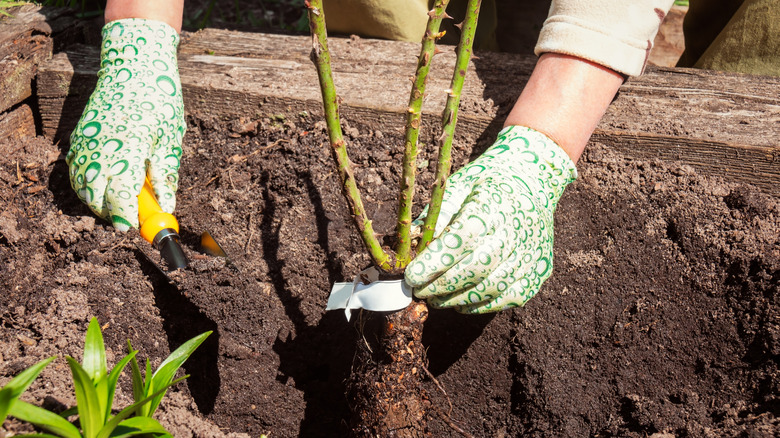The Best Place To Plant Garden Roses (And Where To Avoid)
Roses have a reputation for being difficult plants to grow, requiring clever tricks to thrive in gardens. It's true that they're prone to pests and disease, and there are a daunting number of rose types to choose from. But often, the trouble has nothing to do with the roses themselves, and everything to do with their growing conditions. That's why choosing the right planting location for roses is so essential.
The best place to plant roses is a location with plenty of sun. Six to eight hours of light per day is necessary for most roses, but if the sunniest spot in your garden only gets around four hours of sunlight per day, some types of roses will tolerate that, too. Two shade-tolerant rose varieties to consider are Westerland and Iceberg.
Additionally, the place where you plant your roses should be a fair distance away from fences and walls so the roses can spread out. They should be at least 3 feet away from other plants and 2 feet away from other roses, as they will otherwise have to compete for nutrients, water, and sunlight. The soil should be well-draining and rich in nutrients, though you can perfect your soil for thriving roses by amending it with organic matter. If you plant your roses in a place with all of these conditions, they'll be easy to grow and highly rewarding.
Where to avoid growing roses
As much as roses love to get plenty of sunshine, the opposite is also true — don't bother planting roses in a shady spot in your garden, as they won't get enough light to bloom and will be more prone to disease. This includes spots under trees, or near trees that are still growing since they will eventually shade out the roses. Trees and woody shrubs also compete with roses if they're too close.
Furthermore, avoid planting roses in soggy soil or soil with poor drainage, because it could lead to root rot or fungal diseases. You can test the soil's drainage by digging a hole, filling it with water, and seeing how much the water level lowers per hour. If it's less than an inch, the drainage is poor and your roses will struggle. You can build a raised bed there instead if you don't have another rose-friendly spot, making sure to enrich it with organic material.
If possible, try not to plant roses where other roses have previously grown, either. They're prone to a condition called "replant disease" and may fail to thrive unless moved to another area. Swapping with fresh soil may help prevent this. Lastly, avoid places where the roses will be too exposed to harsh elements, like extreme winds or blazing afternoon sun.

